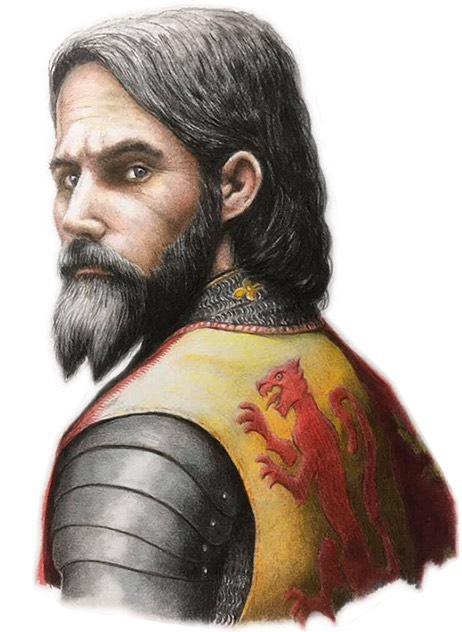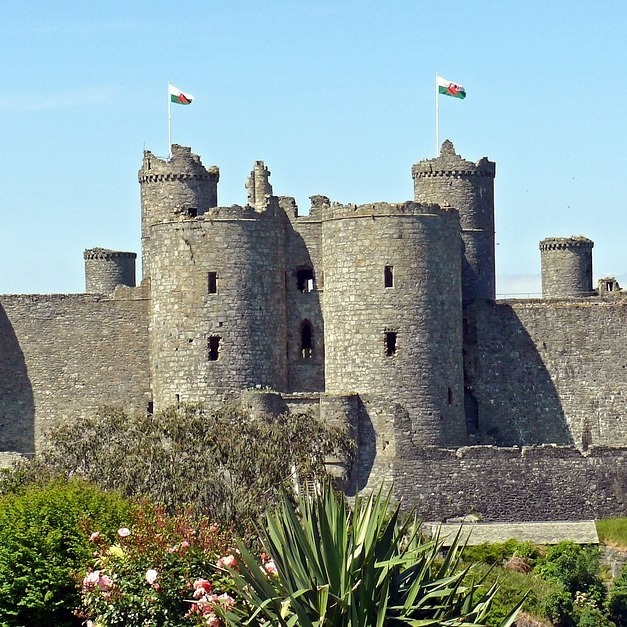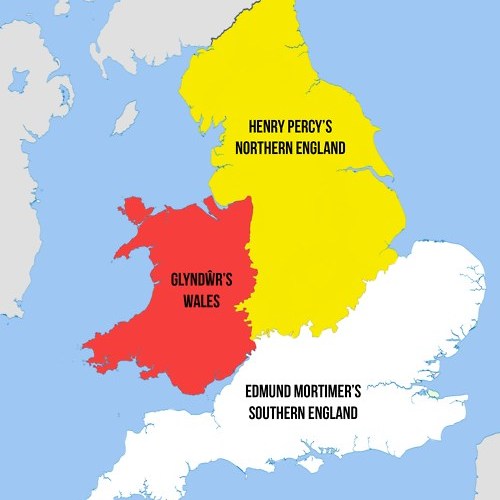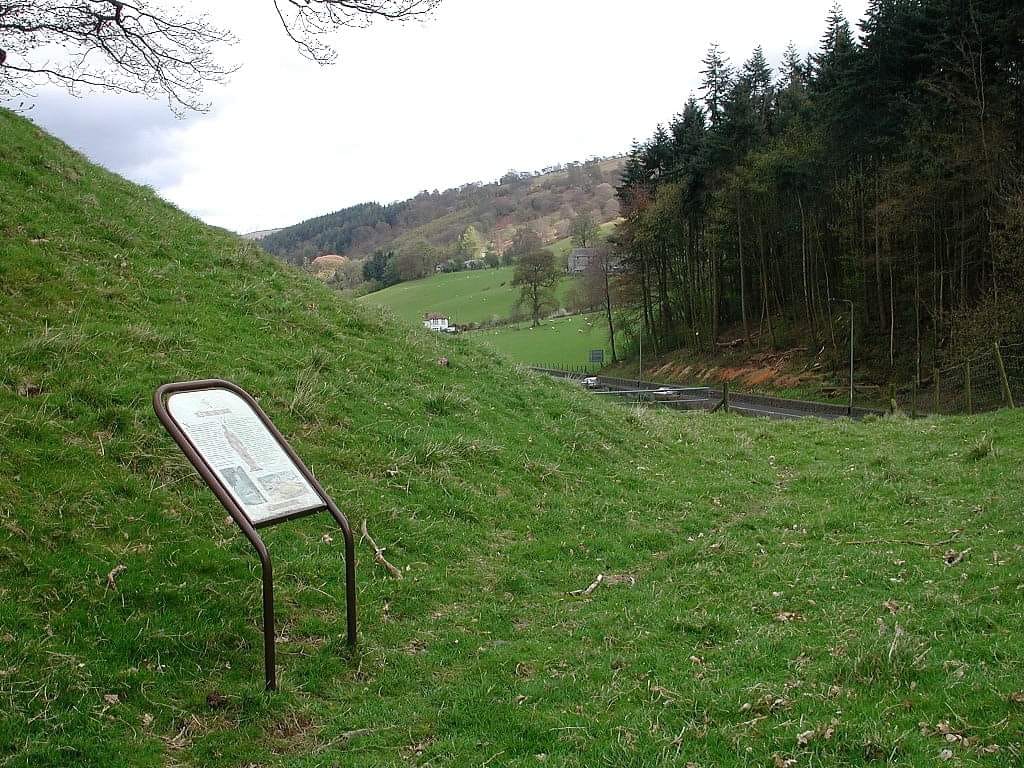Your basket is currently empty!
Owain Glyndŵr: A Welsh Rebel Who Challenged English Rule
Owain Glyndŵr was a Welsh rebel who led a 15 year uprising against English rule. He was also the last native claimant of the Prince of Wales title.
Glyndŵr stands out as a leader who dared to challenge the might of England and strive for an independent Cymru.
Born around 1359 into the noble Glyndŵr family, Owain studied law in London, gaining a deep understanding of both Welsh and English affairs.

The spark that ignited Owain’s uprising was the unjust treatment of the Welsh by English authorities (as well as a dispute with his neighbour, Lord Grey).
Resentment simmered among the Welsh population due to discriminatory laws, oppressive taxes, and the intrusion of English rule.
In 1400, Glyndŵr, a man of noble lineage and considerable military experience, took up the mantle of leadership, proclaiming himself Prince of Cymru and initiating a revolt against English dominion.

It was in August of 1405 when Owain Glyndŵr convened a parliament at Harlech Castle, following his capturing of the castle in the previous year – making it the headquarters of the Uprising.
This parliament discussed the Tripartite Indenture; an ambitious plan by Glyndŵr, Edmund Mortimer and Henry Percy, First Earl of Northumberland to carve England and a freely independent Cymru into three parts. Here is how it would have looked:

1) Owain Glyndŵr, as Prince of Wales, was to have Cymru (which would have included the English portions of the Welsh Marches)
2) Henry Percy would receive the north of England (which included what today is called the midlands).
3) Edmund Mortimer would receive southern England.
Owain Glyndŵr’s rebellion unfolded against a backdrop of political turbulence in England. The young King Henry IV was grappling with internal conflicts and external threats, providing Glyndŵr with an opportune moment to press for Welsh autonomy.
Owain quickly gained support from disaffected Welsh nobles, and the flames of rebellion spread across the country.
The conflict reached its zenith in 1402 with the Battle of Pilleth, a significant victory for Glyndŵr’s forces. This success bolstered his reputation as a formidable leader and attracted additional followers.
For a brief period, Owain Glyndŵr controlled a significant portion of Cymru, establishing a Welsh parliament and gaining recognition from France and Scotland.
However, the tides of fortune were fickle. Internal divisions among the Welsh rebels and external pressures from the English crown weakened Glyndŵr’s position.
Despite his efforts to form alliances with foreign powers, including France, Glyndŵr found himself isolated. The English monarchy, led by Henry IV and later Henry V, launched relentless campaigns to quell the rebellion.
By 1409, Owain Glyndŵr’s dream of an independent Cymru began to crumble. His last stronghold, Harlech Castle, fell to the English forces in 1409, marking the end of the rebellion – though only unofficially until the pardoning of his son, Maredudd, in 1421.
The Welsh uprising gradually faded, and Glyndŵr himself vanished into obscurity. His fate remains a historical mystery, with some accounts suggesting he continued to resist in the shadows, while others propose that he went into exile.

Though unsuccessful in his aims, Owain Glyndŵr stands out as a symbol of defiance, a leader who dared to challenge the might of England and strive for an independent Cymru.
His Uprising may have been quashed, the spirit of resistance he embodied laid the groundwork for future movements seeking self-determination for Cymru.
The name Glyndŵr is attached to educational institutions; towns and the independence movement.

Near the village of Glyndyfrdwy in Denbighshire, there stands Owain Glyndŵr’s Mount – an originally 12th century moat which became synonymous with Glyndŵr in the 15th century.
It was on this very site where, on September 16th, 1400, Glyndŵr would be proclaimed “Prince of Wales” and begin his 15-year Uprising against the English throne.
The area was destroyed around the year 1403 by the forces of the future Henry V, then Henry of Monmouth.
To get there: You will want to use the Llangollen Railway and get off at Carrog station. Turn left up the hill and you’ll soon see it!
Share us your thoughts on niklas@welshhistories.co.uk
THERE’S MORE!
The Unique Origins of Cremation in Cymru
The Tragic End of Cymru’s Last Native Princes
This Clever Trick Welsh Women Used to Defeat the French in 1797 Will Amaze You
Think You Know Welsh History? This Rebel Prince Will Make You Question It
Shop new arrivals
-
(UK + EU) YEARLY Subscription Welsh Histories Magazine
£79.99 -
(US & CAN ONLY) YEARLY Subscription Welsh Histories Magazine
£129.99 -
DIGITAL COPY Welsh Histories Magazine – April 2024
£0.99 -
DIGITAL COPY Welsh Histories Magazine – April 2025
£2.99 -
DIGITAL COPY Welsh Histories Magazine – August 2024
£1.99
More from Welsh Histories
Welsh Histories is a Welsh history celebrating platform which looks to promote all aspects of Welsh history. Though we focus predominantly on native Welsh history, we do also share the non-native aspects from time to time. You can follow us on Facebook; Instagram or Twitter for more. A reader? We also have our very own Welsh Histories Shop where we sell our Welsh Histories Magazine. Diolch yn fawr iawn and keep enjoying Welsh Histories
Sally is a proud wife of a Welshman, editor & writer of Welsh Histories. She’s all about stories—that shout ‘anything Welsh.’ Drop her an email if you have an advice, insight, experience, or a story to share.





